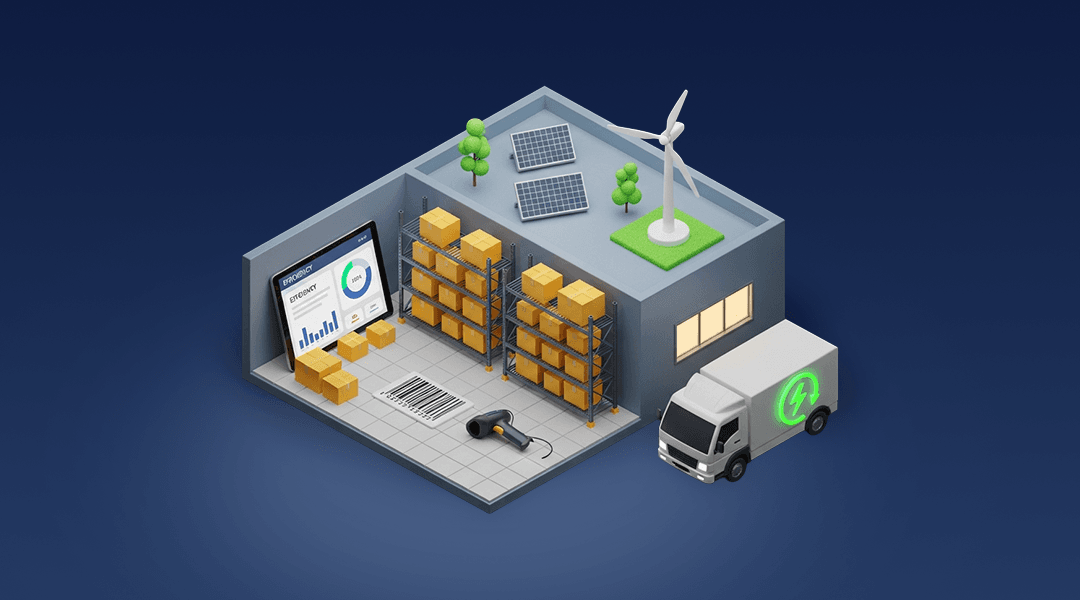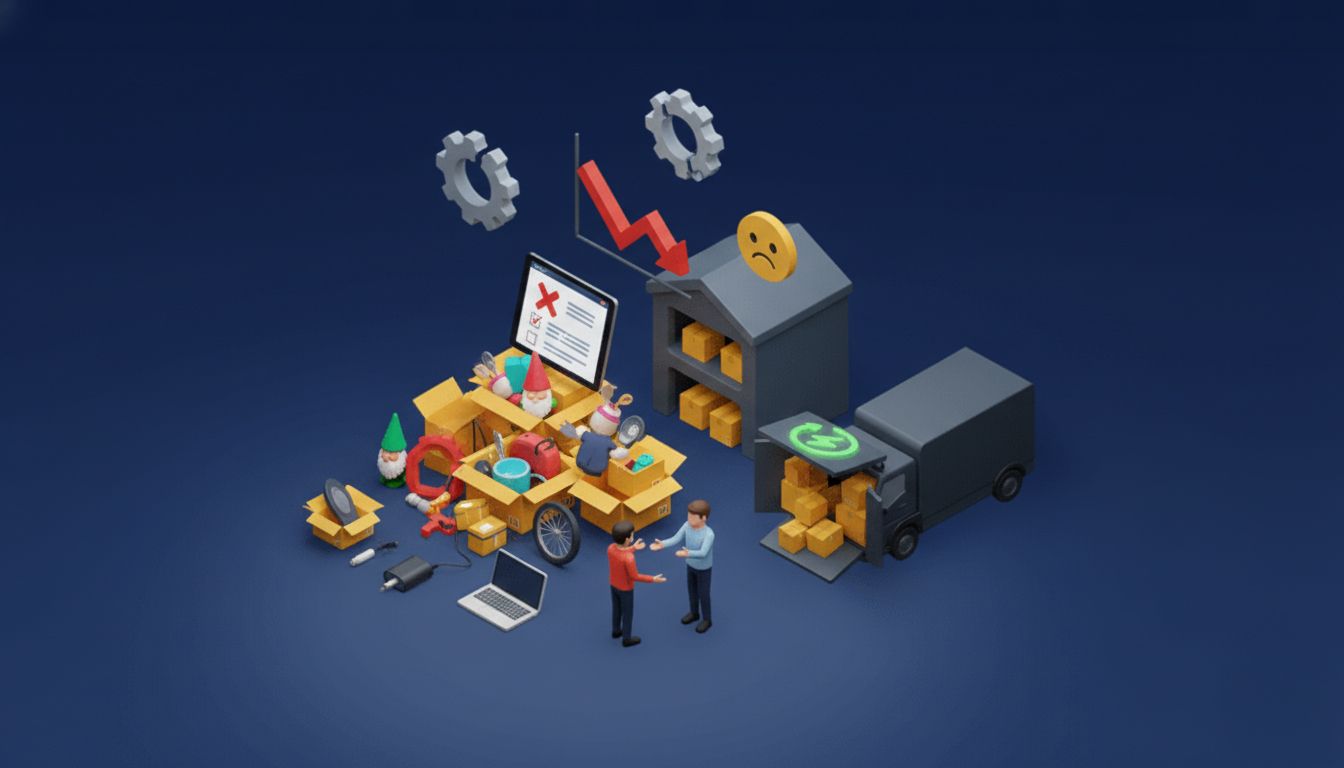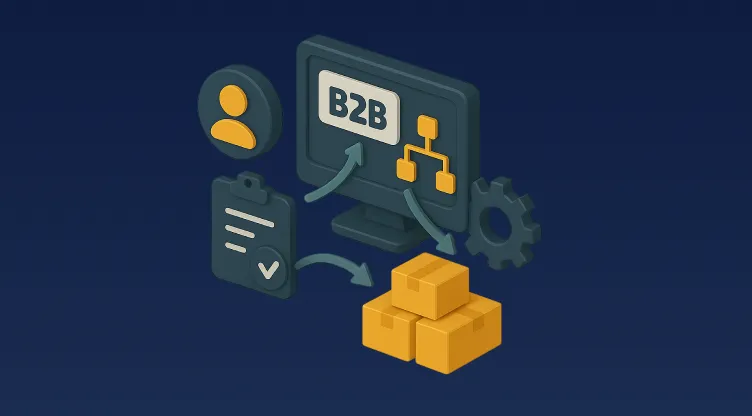Understanding and Improving Warehouse Turnover Rate

Table of Contents
When it comes to maintaining a successful warehouse, one of the most important yet frequently overlooked indicators is the Warehouse Turnover Rate. This indicator does not merely represent a quantifiable number but rather speaks to the health, efficiency, and contentment of everyone working in the warehouse. What does it mean, and why take notice? Let's plunge in!
What is Warehouse Turnover Rate?
The Warehouse Turnover Rate is the percentage of employees leaving a warehouse over some period of time, typically one year. It is an essential indicator of many areas of warehouse processes and employee well-being. A high turnover rate may point to morale problems, training issues, or wages lesser than competition. A decent turnover rate (rather than zero, as some level of change is normal) can suggest a dynamic and changing workforce.
Why is it important to understand and manage your Warehouse Turnover Rate? Because there is a price to pay for high turnover. Consider it this way:
- Loss of Productivity: New hires come in, training is required, and it takes time for them to blend in with others and become productive. Therefore, productivity suffers for a while.
- Enhanced costs: Recruitment and the onboarding and training process of the new employees consume productive resources.
- Disrupted workflow: Frequent changes in staff can disrupt established processes and add inefficiencies.
- Moral impact: The revolving door of employees will obviously affect the remaining employees' morale.
- Loss of institutional memory: Departing employees takes away absorbed knowledge regarding products and processes.
Causes of High Turnover Rates in Warehouses
If you've ever wondered why your Warehouse Turnover Rate is higher than you'd like, you're not alone. Turnover is a global problem in warehousing; however, the first step in fighting it is to know what causes it. Let's pinpoint the reasons why employees are leaving and how significant they are for your enterprise.
Physical Demands of Warehouse Jobs
Let's face it: warehouse work is tough. The physical workload can be very demanding, from lifting a heavy box to prolonged work activities for company staff. Over time, this may result in burnout, injury, and a higher turnover rate.
- Repetitive Tasks: Monotonous work can lead to fatigue and disengagement.
- Safety Concerns: Without proper safety measures, employees may feel at risk.
- Health Impact: The strain of physical labor can discourage long-term commitment.
Without ergonomic principles, safety instruction, and allocable workloads, people's work can become increasingly less meaningful, and ironically, they will search for meaning elsewhere. Resolving these issues significantly impacts Workforce Turnover Reduction and Warehouse Employee Retention Enhancement.
Low Employee Engagement and Job Satisfaction
A detracted employee is a time bomb of attrition. When workers perceive themselves as undervalued, unheard, or disengaged, they will more likely depart. Gallup reported that only 34% of the staff in the United States feel engaged in work, which is even less internationally.
- Lack of Recognition: Employees want to feel appreciated for their hard work.
- Poor Communication: Misaligned expectations and unclear goals can frustrate workers.
- Monotonous Workflow: Without variety or challenges, employees may lose interest.
Boosting engagement doesn’t have to be complicated. Some small, simple steps, such as recognizing accomplishments, encouraging open dialogue, and building a great workplace culture, can do wonders. After all, a satisfied workforce is much less likely to cause a high Warehouse Turnover Rate.
Limited Career Advancement Opportunities
Nobody wishes to be trapped in a dead-end career. If your warehouse doesn't have apparent directions for career progression, employees can quit in favor of greener pastures.
- Lack of Training Programs: Without skill development, employees can’t progress.
- No Promotional Pathways: Talent will move out if there's no room to move up.
- Stagnant Roles: Repetitive tasks with no variety can lead to dissatisfaction.
Employees clearly perceive investment in training, coaching, and career development schemes, as well as management's investment in the member's anticipated future value. This, in turn, will not only improve Warehouse Employee Retention but also create a more densely and productively trained and engaged ranks and files.
Competitive Industry Labor Market
The warehousing business is booming, and with it comes intense competition for labor. If your warehouse isn't meeting industry expectations, employees will leave for more money, benefits, or better working conditions elsewhere.
- Better Pay Somewhere Else: The competing warehouses will have more favorable salaries.
- Improved Benefits: Health insurance, flexible schedules, and bonuses can entice employees away.
- Better Workplaces: Updated buildings and technologically advanced work processes are becoming the standard.
To remain competitive, it's important to compare your products against the norm in the industry frequently. Whether in terms of competitive compensation, added benefits, or commitment to work-life balance, keeping ahead of the times is imperative to Reducing Workforce Turnover.
How to Calculate Warehouse Turnover Rate
If you want to optimize your warehouse operations, knowing your Warehouse Turnover Rate is a requirement. It's not merely a figure—it's a glimpse of the health of your labor force and a basis for Reducing Workforce Turnover. But how do you compute it? Worry not, we have a basic, step-by-step guide ready for you. Let's begin!
Step-by-Step Guide to Turnover Rate Calculation
It is simpler than you may believe to calculate your Warehouse Turnover Rate. Here is how:
- Determine the Time Period: Decide whether you’re calculating turnover monthly, quarterly, or annually. Most businesses use an annual timeframe for a comprehensive view.
- Count the number of employees who exited: Both voluntary (resignations) and involuntary (discharges).
- Calculate the Average Number of Employees: Add the number of employees at the beginning of the period to the number at the end, then divide by two.
- Use the Turnover Rate Formula: Turnover Rate = (Number of Employees Who Left ÷ Average Number of Employees) × 100\
- Interpret the Results: The resulting percentage is your Warehouse Turnover Rate for the specified period.
Examples of Turnover Rate Formulas
To make things even clearer, let’s break it down with real-world examples:
Example 1:
Employees at the Start of the Year: 100
Employees at the End of the Year: 90
Employees Who Left: 20
Average Number of Employees: (100 + 90) ÷ 2 = 95
Turnover Rate: (20 ÷ 95) × 100 = 21.05%
Example 2:
Employees at the Start of the Quarter: 50
Employees at the End of the Quarter: 60
Employees Who Left: 10
Average Number of Employees: (50 + 60) ÷ 2 = 55
*Turnover Rate: *(10 ÷ 55) × 100 = 18.18%
These examples show how the Turnover Rate Calculation can vary based on your workforce size and time period.
Strategies to Reduce Warehouse Turnover Rate
Reducing warehouse turnover is crucial for maintaining operating efficiency, increasing staff happiness, and avoiding avoidable costs. Warehouses may promote a steady and dedicated staff by addressing the underlying causes of warehouse turnover rate and implementing successful measures. The following are actionable techniques for increasing warehouse employee retention and building a more engaged team.
Offering Competitive Wage and Benefits
Money speaks, but it sings when it competes. Here's how you can make it work for warehouse employee retention.
- Competitive Compensation: Compare your pay to industry standards. To keep your talented staff, pay above the curve.
- Benefits Packages: Make your warehouse the finest place to work by offering unique incentives such as wellness programs, dental insurance, and even childcare subsidies.
- Performance bonuses: Reward hard work and devotion with performance-based bonuses to make staff feel valued and motivated.
Improving Workplace Safety and Conditions
Safety comes first, followed by retention.
- Ergonomic Design: Use ergonomics to design workstations that lessen physical strain. Invest in equipment such as lifting assistance and anti-fatigue mats.
- Safety Training: Regularly train personnel on safety practices, emphasizing their relevance in preventing injuries and accidents.
- Adequate Breaks: Ensure staff have time to rest and recover from physical demands, reducing fatigue and encouraging a healthier workplace.
Providing Training and Career Development
Empower your staff to grow alongside your warehouse.
- Skill Development: Provide training in technical skills, warehouse management methods, and even leadership competencies.
- Clear Career Pathways: Create explicit career growth plans to demonstrate to employees that they have a future with your organization.
- Mentoring Programs: Pair new employees with experienced mentors to provide a support system for growth.
These techniques not only cut turnover but also improve warehouse staff retention.
Implementing Employee Feedback Mechanisms
Make your employees part of the change:
- Regular Feedback: Regular feedback establishes open communication by holding feedback meetings where employees can express their issues, opinions, and aspirations.
- Employee Surveys: Conduct surveys to assess employee satisfaction and gain insights into areas for development, reducing workforce turnover.
- Recognition and Recognition: Recognizing outstanding performance with 'Employee of the Month' awards or a simple thank you can enhance morale and engagement.
These tactics demonstrate to employees that their voices are important, increasing warehouse staff retention and lowering turnover rates.
Final Thoughts
Reducing your Warehouse Turnover Rate is more than simply crunching numbers; it's about building an environment where employees feel valued, encouraged, and inspired to stay. By concentrating on Warehouse Employee Retention, offering competitive compensation, improving workplace safety, providing career development opportunities, and listening to employee input, you can turn your warehouse into a thriving hive of productivity and loyalty. But, let's be honest, managing all of these moving elements may be stressful, especially if you're using antiquated technology.
Omniful can help with this. Consider replacing your cumbersome legacy systems with a modular platform that streamlines supply chain, retail, and logistics administration all in one place. Omniful allows you to streamline operations, improve efficiency, and help you create an environment in which people want to stay. Are you ready to dramatically reduce your Warehouse Turnover Rate and transform your company? Contact us today!
FAQs
What is the warehouse turnover rate, and how is it calculated?
The Warehouse Turnover Rate is the percentage of employees who depart your warehouse during a given time period. It is calculated using the following simple formula:
Turnover Rate = (Number of Employees Who Left ÷ Average Number of Employees) x 100.
For example, if 10 employees leave while the average workforce is 50, your turnover rate is 20%. It's an important statistic for assessing workforce stability and suggesting opportunities for improvement.
What are the common causes of high turnover in warehouses?
Several factors can lead to high turnover. Some prominent causes include physically demanding labor, low compensation, limited growth possibilities, a terrible working environment, and a lack of recognition. Essentially, if employees do not feel valued, respected, and fairly compensated, they will likely look elsewhere.
How can warehouses reduce employee turnover effectively?
Reduced turnover necessitates a multifaceted approach. Offer competitive salaries and benefits, prioritize workplace safety, create chances for training and growth, and actively seek and respond to employee input. Creating a healthy and supportive work atmosphere is essential, as happy employees are less likely to leave.























